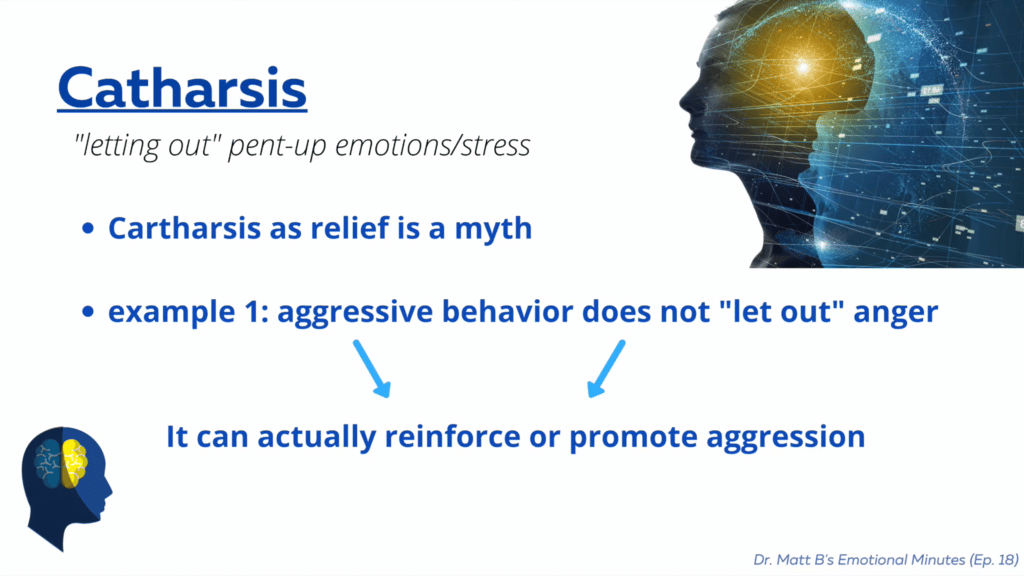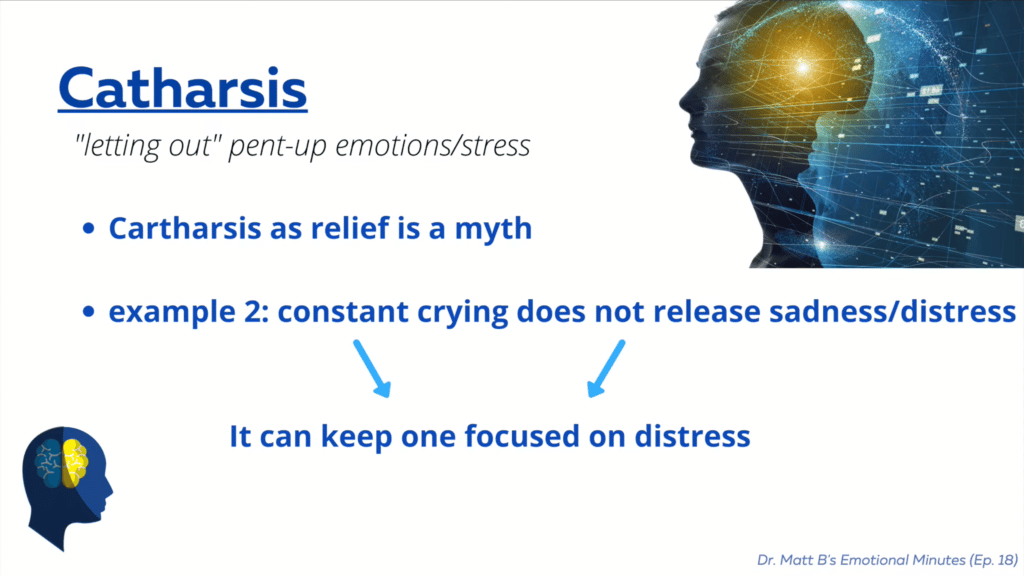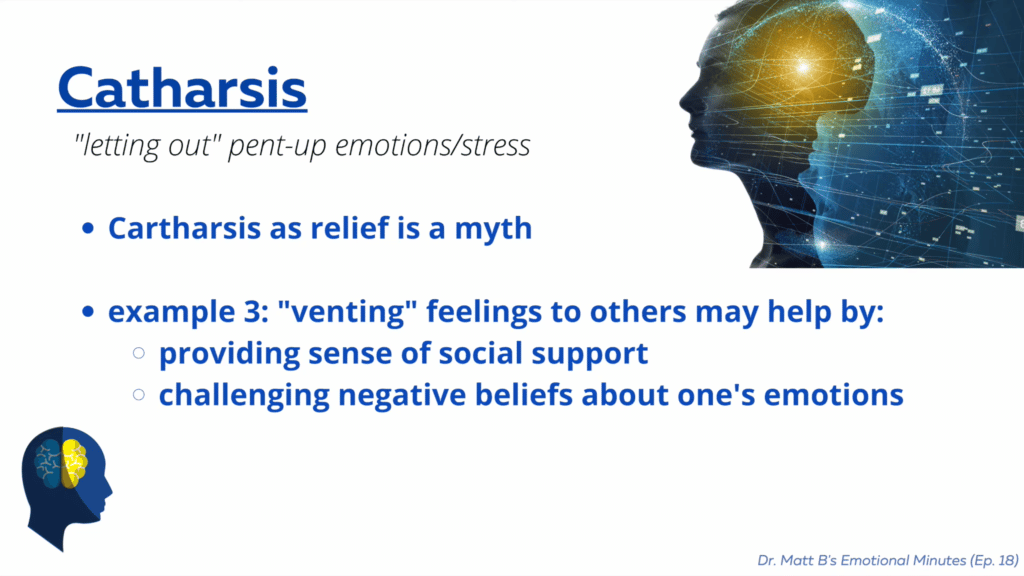It’s a common idea in Western culture that “letting it out” or emotionally venting (known as “catharsis”) is an effective way to help manage difficult emotions, but a lot of research has found that catharsis itself does not help attain emotional relief and can sometimes actually contribute to certain emotional difficulties. This video explores myths of catharsis as well as why it might appear to provide relief at times even when it does not provide relief.
Welcome back, I’m Dr. Matt B with your Emotional Minutes. Today we are talking about the concept of catharsis. Basically, catharsis is letting out pent up energy or things that have been bothering you.
The idea of things you haven’t worked through bothering you and causing pent-up psychic energy initially came from Freud. He proposed that this can build up, especially with stress and traumatic events that people experience. However, research has found is that catharsis does not necessarily work in the way. Instead, they found that other factors account for the sense of relief people feel.
Why Catharsis Doesn’t Work for Anger
Phrases like “I just need to let it out” are common. As are beliefs that a child hitting a pillow will relieve pent up energy. What science has found is this does not release the anger and frustration.

Instead, it encourages aggressive behaviors because it teaches that it’s okay to hit something when feeling frustrated. Despite being told this is okay and helpful, the child never actually releasing anything. In addition, they are being taught to engage in anti-social behavior to deal with their emotions.
Why It Doesn’t Work for Sadness
This also comes up with crying as well. People often say they need to have a good cry to let something out. Sometimes they can experience relief after crying. However, what often happens is they continue to use crying as a way to cope with what they are experiencing. As they continue to rely on crying, they are stuck focusing on the negative and difficult things in their life. This prevents them from finding strategies or tools to approach the things that are making them cry.

Being sad about something is completely understandable. It is how people start to cope with difficult or sad things that they experience.
Why Shouting to the Wind Doesn’t Help
Another form of catharsis is to talk about the situation. This can be helpful as well, but often it’s not necessarily the act of talking that provides relief.
To better explain this, let’s think about how you would feel in the following situation: You are struggling with something, so you go to the woods and talk to a tree. If catharsis worked by simply letting it out, then you should feel better, right? But, would you?

Catharsis Unmasked: Social Support
It is the social support you get from telling someone about what you are going through that makes the difference. Having that support is what gives you a sense of relief. Often, we benefit from the person listening providing feedback. Actions like refuting our negative beliefs or giving different causes for the bad experience help us work through the feelings. This is because we get some relief from talking about our experiences openly and without negative consequences.
People believe that in letting things out, they’re getting rid of pent up emotions. In truth, other factors, such as social support, are what really provide that relief.



